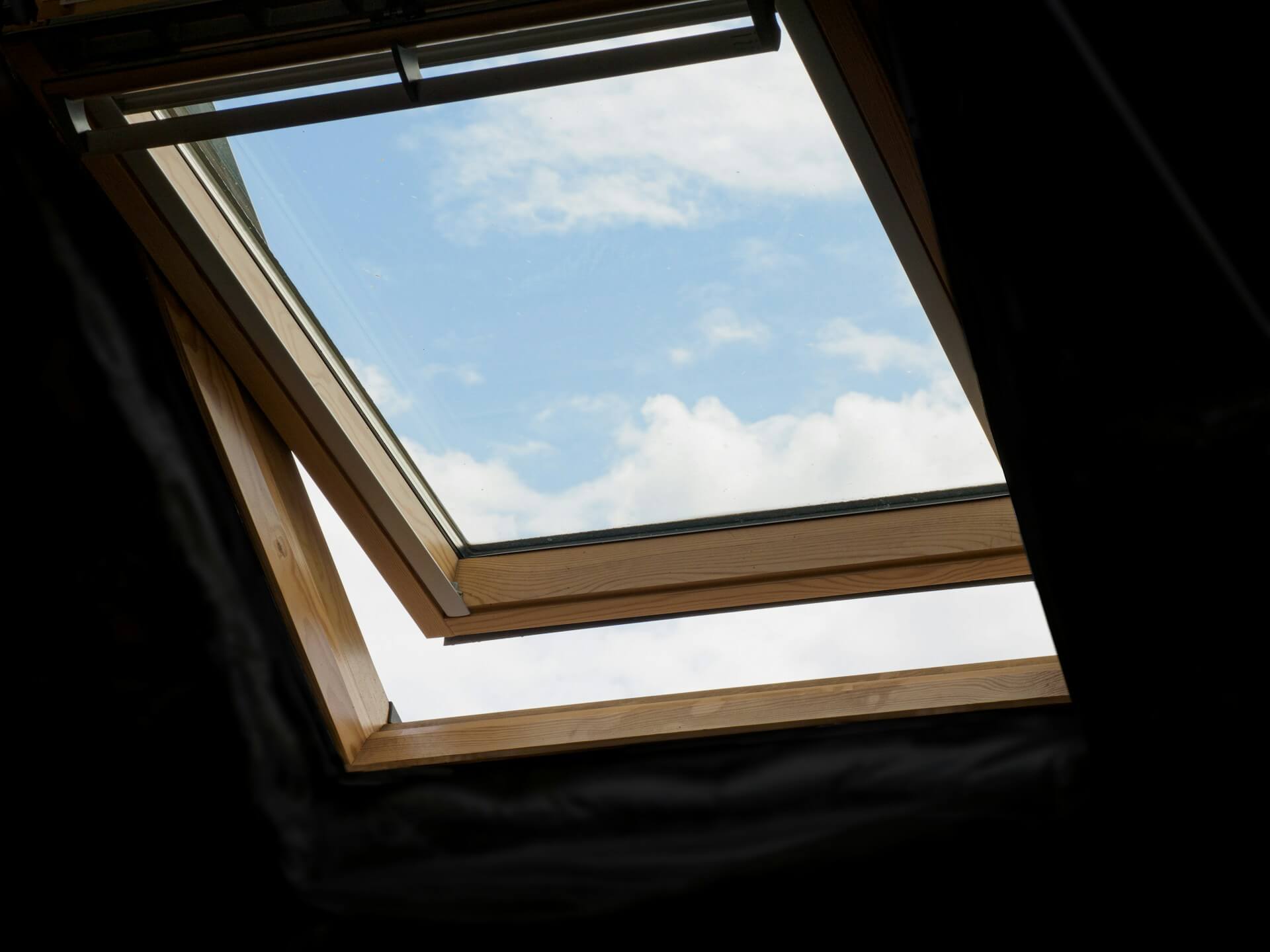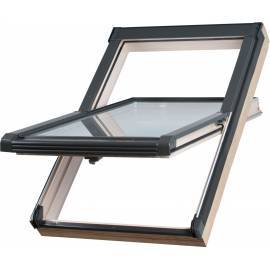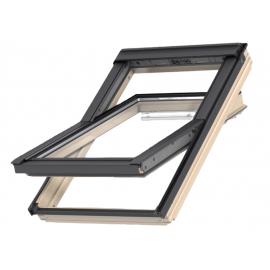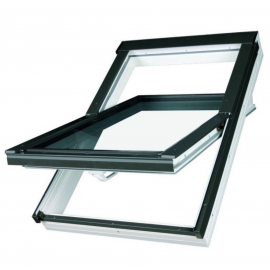Loft conversions remain one of the most popular ways to extend living space in the UK. While selecting the right double glazing is straightforward, choosing the correct new windows is often overlooked by property owners. The “best” choice depends entirely on the room’s function and your specific aesthetic preference.
Table of Contents
Timber Roof Windows: The Classic Choice
Timber roof windows are the traditional choice for roof glazing. The natural warmth of wood is difficult for synthetic materials to replicate. These frames are particularly favoured for their authentic appearance.
Aesthetics and Atmosphere
Timber windows have an unbeatable aesthetic appeal thanks to their natural grain structure. They are the preferred choice for period properties and conservation areas, where preserving the original features is important. Wooden windows instantly add a touch of luxury to any interior, immediately adding character.
High-quality timber stains and varnishes allow for extensive customisation. You can match the frame to existing skirting boards or furniture. This flexibility makes timber windows ideal for bespoke interior designs and style.
Local planning authorities often mandate the use of timber for homes in Conservation Areas or Listed Buildings. This helps to ensure that the property maintains its heritage appearance alongside neighbouring structures. However, you should always check with your local council before installation to avoid costly enforcement action.
Insulation and Sustainability
Wood is a naturally insulating material with a cellular structure that retains heat. Modern timber windows with high-quality double or triple glazing offer good insulation and thermal performance. Furthermore, wooden frames protect the glass from shattering when the structure rapidly contracts.
Timber offers excellent environmental credentials as a carbon-neutral resource. FSC-certified wood ensures the material comes from sustainably managed forests. Timber windows have a substantially lower carbon footprint than plastic alternatives.
Maintenance Requirement
To ensure the longevity of timber windows, they require proper maintenance. You should clean and inspect the finish annually to identify any signs of wear. Neglecting this can lead to rot or moisture ingress.
Generally, owners need to repaint or re-lacquer the frames every 5 to 10 years. This upkeep protects the wood from UV rays and rain. If you maintain them well, timber windows offer superior longevity.
Other products in category: Sunlux Centre Pivot
£182.50 tax excl.
Other products in category: Timber Roof Windows
£175.00 tax excl.
PVC Roof Windows: The Modern Practicality
uPVC roof windows are the obvious choice for contemporary builds and replacements. The white plastic provides a clean, neutral finish that suits modern interiors. Modern uPVC is reinforced with steel or aluminium to ensure structural integrity.
Moisture Resistance
uPVC windows are completely impervious to humidity and water. Unlike wooden frames, they do not absorb moisture from the air. This means they are immune to warping, swelling or rotting.
They also prevent mould growth in damp environments. This makes uPVC windows the obvious choice for wet rooms. They retain their structural integrity regardless of weather conditions.
The “Fit and Forget” Factor
uPVC windows are renowned for being low-maintenance. Throughout their lifespan, they don’t require sanding, varnishing or treating. This “fit and forget” quality is popular with busy homeowners.
Cleaning uPVC windows is usually as simple as wiping them with soapy water. This restores their bright white appearance instantly. The lack of required paint or stain also saves significant time and money.
Clean and Contemporary Looks
uPVC window frames have a sleek profile that blends in with white ceilings. This creates the impression of a brighter, more spacious room. They provide a minimalist backdrop that won’t clash with changing décor.
The white finish reflects sunlight, maximising the amount of light that enters the loft. Modern uPVC windows retain their colour without yellowing for many years. They provide a crisp, uniform look across the property.
Other products in category: PVC Roof Windows
£195.83 tax excl.
Other products in category: PVC Roof Windows
£266.67 tax excl.
Timber vs. uPVC Windows Comparison
When comparing timber and uPVC windows, it is important to consider longevity, cost and performance. Both options effectively serve specific needs. The following points outline the key differences and advantages of the two types of window.
Durability and Longevity
There is no doubt that wooden windows are far more durable than uPVC windows. They can last considerably longer, often exceeding 60 years. However, to achieve this, the frames must be well-maintained and treated. Although wood is robust, it is susceptible to biological decay if neglected.
uPVC windows typically have a lifespan of between 15 and 35 years before they need replacing. This depends on the quality of the material, the installation and the maintenance. The plastic material eventually becomes brittle due to UV exposure. However, they are immune to metal rust and biological degradation throughout their lifespan.
Cost and Value
Timber windows are typically the more expensive option regarding upfront investment. The cost of materials and craftsmanship drives this higher price. However, their repairability offers value over the longer term. Buying timber is an investment protected by extensive guarantees. Timber frames often carry structural warranties of up to 30 years against rot. By contrast, uPVC warranties usually cover 10 to 15 years, focusing on profile stability and discolouration.
uPVC windows are cheaper to purchase and install than timber ones, but prices can vary based on features and product quality. The absence of maintenance costs makes uPVC windows a budget-friendly solution that can potentially save you money. However, timber windows can increase property value more effectively than uPVC.
Thermal Efficiency (U-Values)
Both wooden and uPVC windows are available as energy-efficient, insulating models with double-glazed panes. The natural properties of timber prevent heat transfer through the frame. This reduces the risk of cold bridges forming around the glass.
Modern uPVC frames utilise multi-chambered designs to trap air. Ultimately, well-designed windows offer comparable energy efficiency compared to others, regardless of the material used for the frames. Both options can help to reduce heating bills.
Safety and Security
Security is a priority for every homeowner, and uPVC windows often come with multi-point locking systems as standard. This makes it exceptionally difficult for intruders to force open the frame.
Modern timber windows are equally secure and are often reinforced with steel to prevent entry. In terms of fire safety, timber frames that have been treated with fire retardants burn slowly, thus maintaining their structural integrity for longer than plastic frames. While uPVC is difficult to ignite, it can melt and warp at high temperatures.
Acoustic Performance
Noise reduction is often a key consideration for homes located near busy roads. While the glazing unit is responsible for most of the work, the frame material also plays a role. Timber is a dense material that naturally dampens sound vibrations. Wooden frames generally offer better acoustic performance than hollow uPVC profiles. They can reduce external noise by several decibels more than plastic alternatives. If silence is your priority, wood is the superior choice.
Sustainability and Lifecycle
The environmental impact goes beyond just the carbon footprint. At the end of its life, timber is fully biodegradable. When wooden windows are replaced, they naturally break down without leaving harmful residues.
uPVC, however, presents a more complex environmental challenge. Although modern uPVC frames can be recycled up to ten times, they eventually reach their limit. Plastic waste often ends up in landfill, whereas timber supports a circular economy.
Which Frame Should You Choose for Which Room?
The decision often depends on the specific conditions of the room. Different areas of the house put different stresses on the frames. Here is the verdict based on location.
Bathrooms and Kitchens
uPVC windows are the superior choice for bathrooms and kitchens. These rooms generate high levels of steam and humidity. Timber windows are susceptible to warping and moisture absorption in such conditions.
The moisture resistance of uPVC prevents condensation damage. Cooking grease and soap residue are easier to clean off plastic, so uPVC windows offer better hygiene and durability.
Bedrooms and Living Rooms
Timber windows are ideal for bedrooms and living rooms. The natural beauty of wood creates a cosy and relaxing atmosphere. As these rooms rarely suffer from excess moisture, the material is well protected.
If you prefer a modern, minimalist style, uPVC windows are also a good option. They work particularly well with white interior walls. However, timber offers better aesthetics and sound insulation, which can help you sleep better.
Hard-to-Reach Areas (High Ceilings)
uPVC windows are recommended for use in areas with high ceilings, such as stairwells. To maintain these windows is difficult and dangerous, so consult an installer. No one wants to climb a ladder to paint a frame 4 metres up.
The key here is the durability of uPVC without intervention. Once installed, they require little attention. This practicality outweighs the aesthetic appeal of wooden windows in hard-to-reach places.
Why Choose Sunlux Roof Windows?
Modern homes thrive on natural light, and roof windows are the most effective way to bring it into your living space. When it comes to finding the right roof window for your property, you simply won’t find a better selection than at Sunlux!
At Sunlux Roof Windows, we don’t just promise quality – we guarantee it. We stock an extensive range of roof windows and skylights from the most trusted manufacturers on the market, including Velux and Fakro. By offering competitive trade prices on these premium brands, we ensure that high-performance glazing is accessible to all budgets.
Whether you prefer the warmth of timber or the practicality of PVC, all of the windows in our catalogue feature the latest designs and benefits. The result is a range of roof windows that offer better performance and look stunning. Browse our collection today and find the perfect addition to your home.




